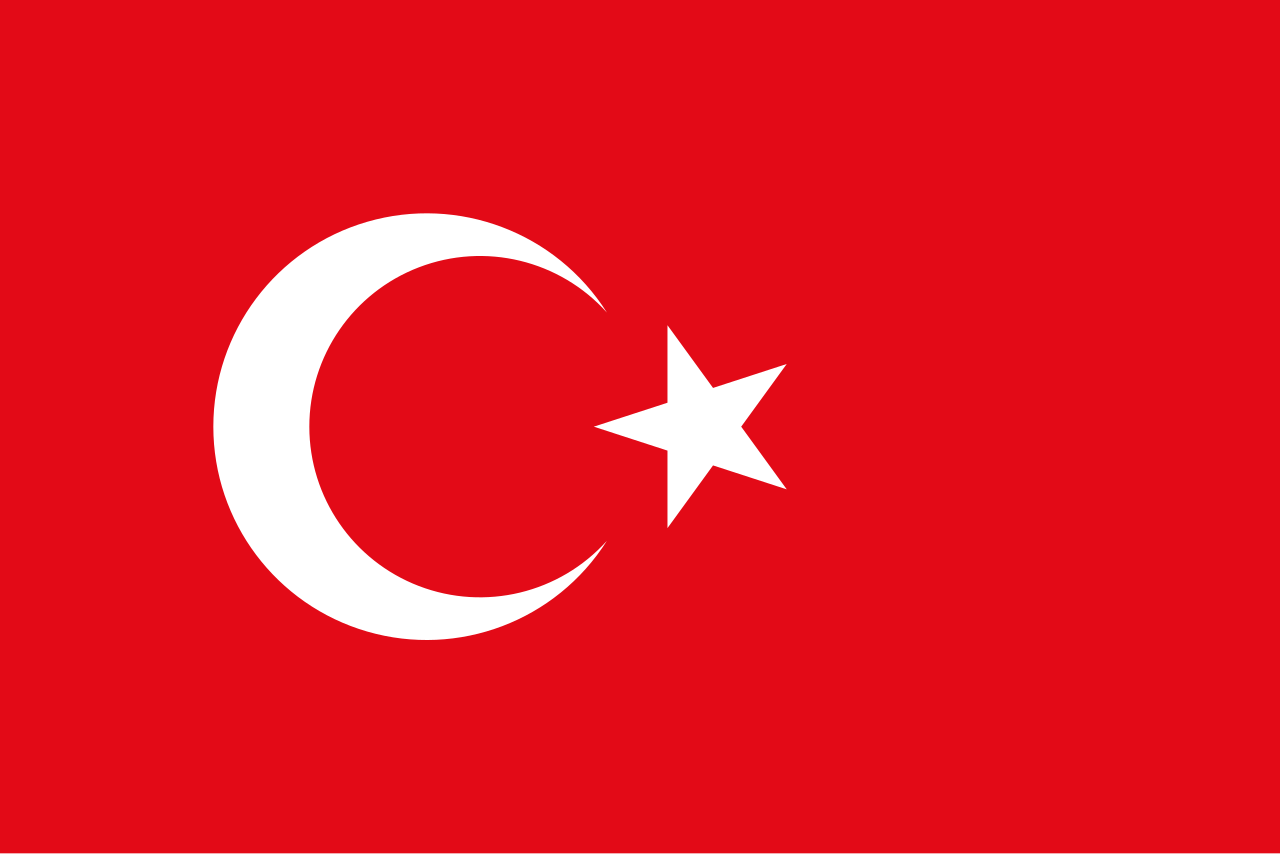
漢德百科全書 | 汉德百科全书

 European Union
European Union

 European Union
European Union
 Acting heads of government in the European Union
Acting heads of government in the European Union
 Giorgia Meloni
Giorgia Meloni
 Partei Europäische Konservative und Reformer
Partei Europäische Konservative und Reformer

 Party and government
Party and government

 Party and government
Party and government
 Group of Seven,G7
Group of Seven,G7

 Party and government
Party and government
 Group of the twenty most important industrial and emerging countries
Group of the twenty most important industrial and emerging countries
 President or Chairman
President or Chairman
 President or Chairman
President or Chairman
 Italien
Italien

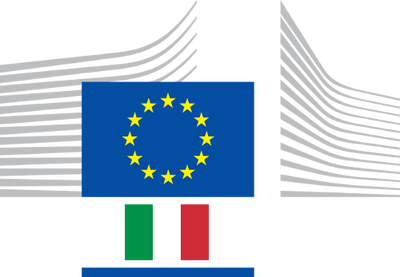




 History
History
 M 1500 - 2000 AD
M 1500 - 2000 AD

 History
History

 History
History

 History
History

 History
History
 N 2000 - 2100 AD
N 2000 - 2100 AD
 Japan
Japan

 Party and government
Party and government
 Group of the twenty most important industrial and emerging countries
Group of the twenty most important industrial and emerging countries

 Party and government
Party and government
 Group of Seven,G7
Group of Seven,G7
 Silk road
Silk road

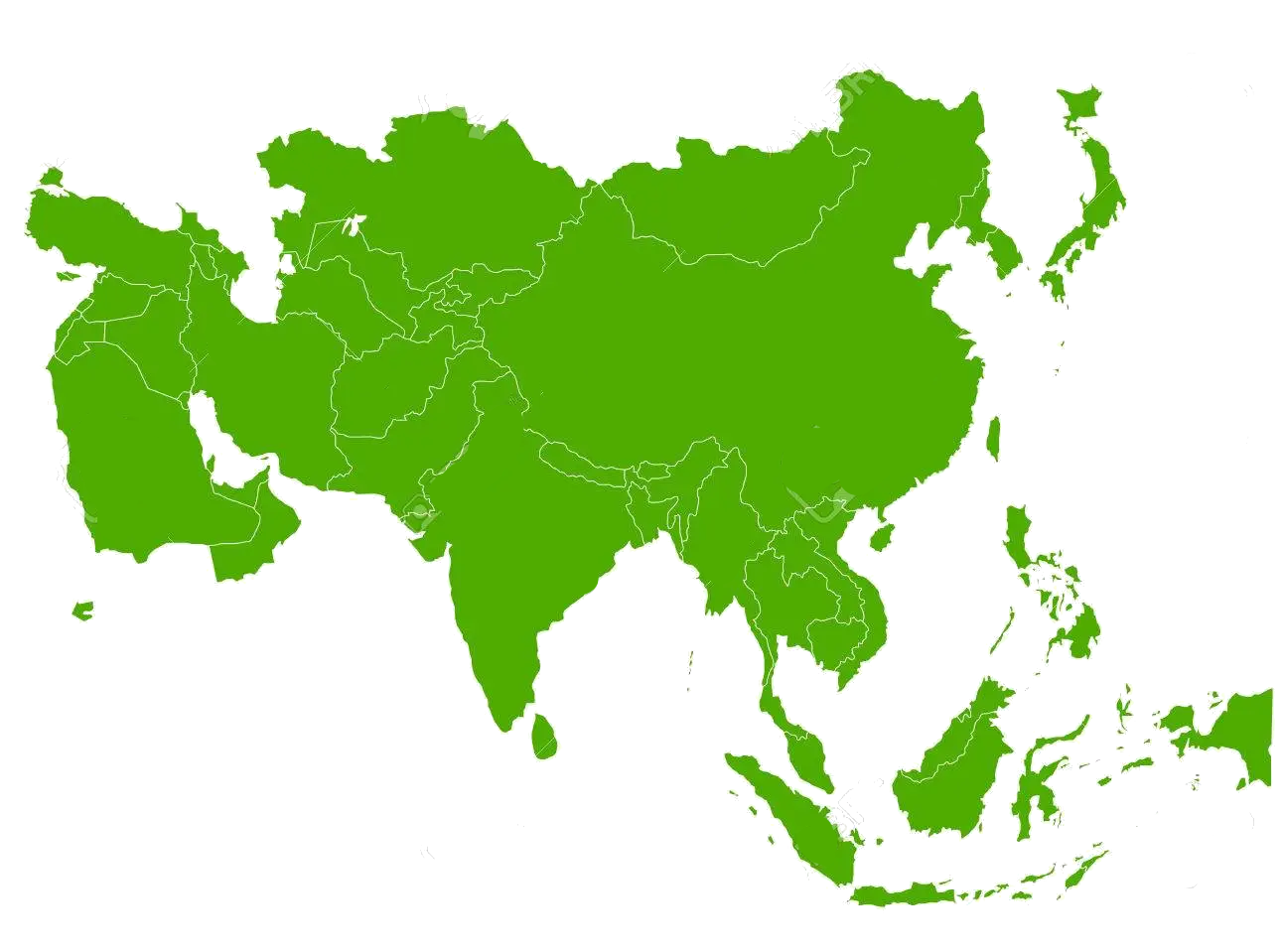 States of Asia
States of Asia
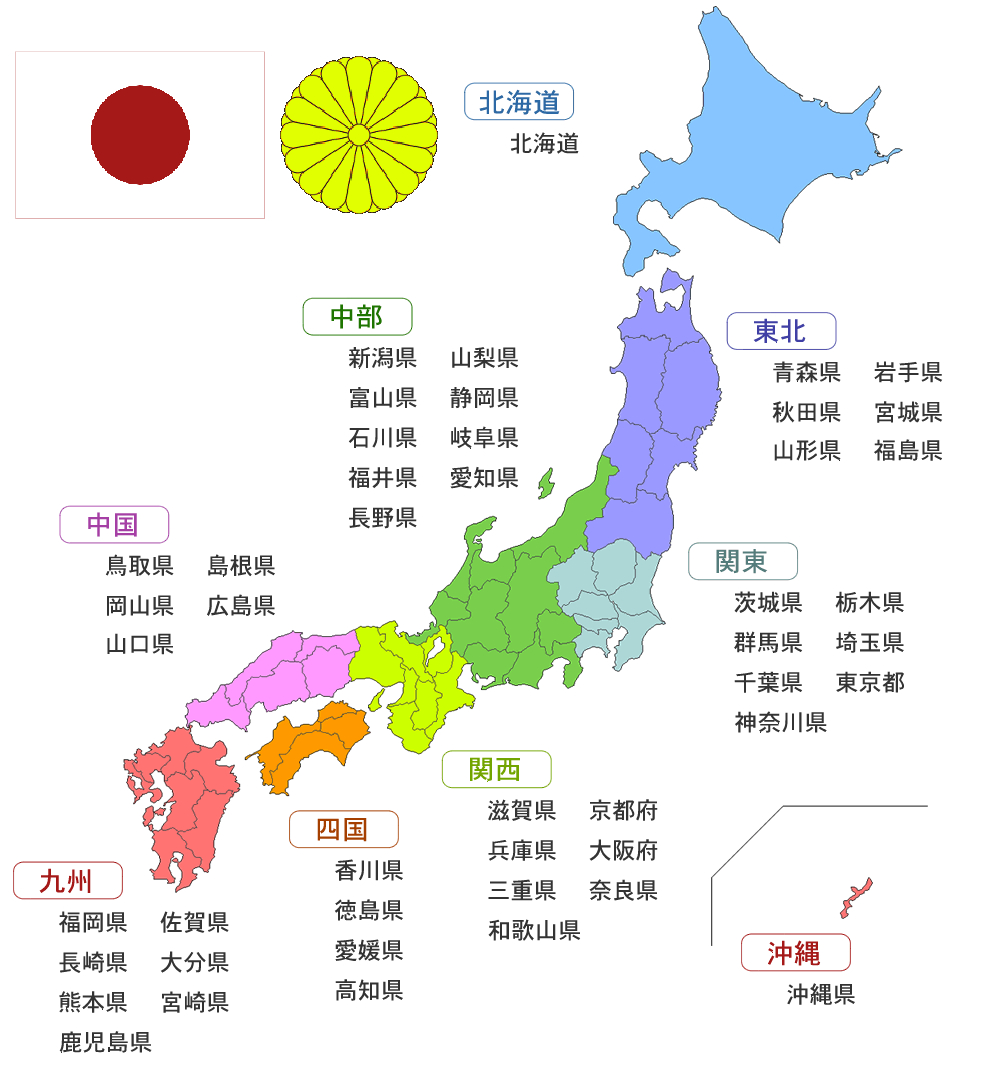
Japan (japanisch 日本, Nihon/Nippon; ) (amtlich: Staat Japan 日本国, Nihon-koku/Nippon-koku) ist ein 6852 Inseln umfassender ostasiatischer Staat im Pazifik, der indirekt im Norden an Russland, im Nordwesten an die Volksrepublik China, im Westen an Nordkorea und Südkorea und im Südwesten an die Republik China (Taiwan) grenzt und flächenmäßig der viertgrößte Inselstaat der Welt ist. De-facto-Hauptstadt und größte urbane Siedlung ist Tokio.
Die Bildung des japanischen Staatswesens begann im 5. Jahrhundert unter kulturellem Einfluss des chinesischen Kaiserreichs. Seit dem 16. Jahrhundert stand Japan im Kontakt mit dem Westen und stieg seit dem 19. Jahrhundert zur Großmacht auf, erwarb Kolonien wie Korea und Taiwan, nahm an beiden Weltkriegen teil und beherrschte kurzzeitig große Teile Südost- und Ostasiens. Das Japanische Kaiserreich war bis 1947 eine nach dem monarchischen Prinzip ausgerichtete, zum Teil an preußischem Vorbild angelehnte, konstitutionelle Monarchie mit dem japanischen Kaiser als Staatsoberhaupt. Damit zählte Japan zu einem der weltweit letzten Kaiserreiche. Seine aggressive Expansionspolitik in China im Vorfeld und während des Zweiten Weltkrieges (Pazifikkrieg) führte schließlich zur Niederlage an der Seite der Achsenmächte im August 1945. Im unter Douglas MacArthurs Besatzungsregierung gestalteten japanischen Staat seit 1947 ist der Souverän das Volk, höchstes Organ der Staatsgewalt das Parlament, dessen Kammern seither beide direkt vom Volk gewählt werden. Das Kaisertum wurde nicht abgeschafft, aber der Kaiser als „Symbol des Staates“ auf zeremonielle Aufgaben ohne eigenständige Autorität in Staatsangelegenheiten reduziert.
Japan wird zu den dichter besiedelten Ländern Asiens gezählt und liegt mit 127 Millionen Einwohnern auf Platz elf der bevölkerungsreichsten Länder der Erde. Die japanische Bevölkerung konzentriert sich überwiegend auf die vier Hauptinseln und besteht zu 99 % aus Japanern. Zu den Minderheiten gehören Koreaner, Chinesen und Filipinos. Seit den 2000er Jahren leben in Japan auch mehrere Tausend Gastarbeiter und Asylbewerber aus Afrika und anderen asiatischen Ländern. Die meisten Einwohner sind Anhänger des Shintoismus und Buddhismus.
Als historisch erste Industrienation Asiens hat Japan heute eine sehr hoch entwickelte Volkswirtschaft und war viele Jahre lang die weltweit zweitgrößte Wirtschaftskraft der Welt hinter den Vereinigten Staaten, mit denen es militärisch seit 1952 verbündet ist. Japan ist Mitglied der Gruppe der Sieben größten Industrienationen der Welt und der OECD. Japan nimmt in der Rangfolge gemäß dem Index der menschlichen Entwicklung der Vereinten Nationen den 17. Platz der 187 vom Index berücksichtigten Mitgliedstaaten der Vereinten Nationen ein.
日本国(日语:日本国/にっぽんこく、にほんこく Nippon-koku, Nihon-koku */?),通称日本,是位于东亚的岛屿国家,由日本列岛、琉球群岛和伊豆-小笠原群岛等6,852个岛屿组成[10],面积约37.8万平方公里[11]。国土全境被太平洋及鄂霍次克海、日本海、东海等缘海环抱,西邻朝鲜半岛及俄属远东,东北接千岛群岛,西南面台湾及中国大陆东部。人口达1.26亿[6],居于世界各国第11位,当中逾3,500万人居住于首都东京及周边数县构成的首都圈,为世界最大的都市圈[12]。政体施行议会制君主立宪制,君主天皇为国家与国民的象征,实际的政治权力则由国会、以及内阁总理大臣(首相)所领导的内阁掌管[13]。
传说日本于公元前660年2月11日建国[14],在公元4世纪出现首个统一政权,并于大化改新中确立了天皇的中央集权体制,文化上则深受中国隋唐两代之影响。12世纪后的六百年间,日本由幕府等数个武士阶级政权实际统治,期间包括了政治纷乱的南北朝与战国时代。17世纪起江户幕府颁布锁国令,至1854年被黑船迫以开港才结束。此后,日本在西方列强进逼的时局下,首先天皇从幕府手中收回政治实权,接着在19世纪中期的明治维新进行大规模政治与经济改革,引入欧洲的科学与技艺,日本的社会于是实现了工业化及现代化,施行天皇专权的君主立宪制,将北海道正式纳为领土;而自19世纪末起,日本开始进行对外扩张,首先并吞琉球,之后将台湾、朝鲜、库页岛等地纳为殖民地。进入20世纪时,日本已成为当时各国承认的帝国主义列强之一,也是当时东方世界唯一的大国。日本后来成为第二次世界大战的轴心国之一,但最终于1945年投降。败战后,日本在盟军主导下转型为以国会为中心的民主政体,天皇地位虚位化[13],同时依据新宪法放弃发动战争的权利,仅维持防御性的武装力量。
日本是世界第三大经济体,亦为七国集团成员,是世界先进国家之一,主要奠基于日本经济在二战后的巨幅增长。现时日本的科研能力、工业基础和制造业技术均位居世界前茅[15],并是世界第4大出口国和进口国[16]。2018年,日本的人均国内生产总值依国际汇率可兑换成为四万零八百美元,人均国民收入则在四万四千四百美元左右,人类发展指数亦在最高组群行列[17]。
日本国(にほんこく、にっぽんこく)、または日本(にほん、にっぽん)は、東アジアに位置する日本列島(北海道・本州・四国・九州の主要四島およびそれに付随する島々)及び、南西諸島・伊豆諸島・小笠原諸島などから成る島国[1][2]。議会制民主主義国家である。首都は東京都。 「日本」という漢字による国号の表記は、日本列島が中国大陸から見て東の果て、つまり「日の本(ひのもと)」に位置することに由来するのではないかとされる[3]。近代の二つの憲法の表題は、「日本国憲法」および「大日本帝国憲法」であるが、国号を「日本国」または「日本」と直接かつ明確に規定した法令は存在しない。[疑問点]ただし、日本工業規格 (Japanese Industrial Standard) では日本国、英語表記をJapanと規定。更に、国際規格 (ISO) では3文字略号をJPN、2文字略号をJPと規定している。また、日本国外務省から発給される旅券の表紙には「日本国」の表記と十六一重表菊[4] を提示している。法令で日本を指し示す表記には統一されておらず日本、日本国、本邦、わが国、などが混在している。
日本では、大和政権が統一以降に自国を「ヤマト」と称していたようであるが、古くから中国や朝鮮は日本を「倭」と呼んできた。石上神宮の七支刀の銘や、中国の歴史書(『前漢書』『三国志』『後漢書』『宋書』『隋書』など)や、高句麗の広開土王の碑文も、すべて倭、倭国、倭人、倭王、倭賊などと記している。そこで大和の代表者も、外交時には(5世紀の「倭の五王」のように)国書に「倭国王」と記すようになった[46]。
しかし中国との国交が約120年に渡って中絶した後、7世紀初期に再開された時には、『日本書紀』では「東の天皇が敬いて西の皇帝に白す」、『隋書』には「日出ずる処の天子、書を日没する処の天子に致す。恙無しや」とする国書を日本側が渡した記述があり、従来のように倭と称する事を避けている。中国側では『旧唐書』の「東夷伝」に初めて日本の名称が登場し、「日本国は倭国の別種なり。其の国、日の辺に在るを以ての故に、日本を以て名と為す」「或いは曰く、倭国自ら其の名の雅ならざるを悪(にく)み、改めて日本と為す」「或いは曰く、日本は旧(もと)小国、倭国の地を併す」のように、倭が名称を日本に変えた理由を説明している[47]。また、『新唐書』においては「国日出ずる所に近し、以に名をなす」とあり、隋書の「日出処天子」と共通している。
この7世紀には、遣隋使に続いて遣唐使がしばしば派遣されているが、いつから「倭」に変えて「日本」を国号と変えたのかは明らかでない[48]。使者の毎回の交渉について詳しく記述している『日本書紀』も、8世紀に国号としての日本が確立した後の書物であり、原資料にあった可能性のある「倭」の字を、国号に関する限りすべて「日本」と改めている。それ以外の文献では、733年(天平5年)に書かれた『海外国記』の逸文で、664年(天智3年)に太宰府へ来た唐の使者に「日本鎮西筑紫大将軍牒」とある書を与えたというが、真偽は不明である。結局確かなのは『続日本紀』における記述であり、702年(大宝2年)に32年ぶりで唐を訪れた遣唐使は、唐側が「大倭国」の使者として扱ったのに対し、「日本国使」と主張したという。『旧唐書』の「東夷伝」の記事も、この日本側の説明に基づいているようである[49]。
Japan (Japanese: 日本; Nippon [ɲippoɴ] or Nihon [ɲihoɴ]; formally 日本国 ![]() Nippon-koku or Nihon-koku, lit. "State of Japan") is an island country in East Asia. Located in the Pacific Ocean, it lies off the eastern coast of the Asian continent and stretches from the Sea of Okhotsk in the north to the East China Sea and the Philippine Sea in the south.
Nippon-koku or Nihon-koku, lit. "State of Japan") is an island country in East Asia. Located in the Pacific Ocean, it lies off the eastern coast of the Asian continent and stretches from the Sea of Okhotsk in the north to the East China Sea and the Philippine Sea in the south.
The kanji that make up Japan's name mean "sun origin", and it is often called the "Land of the Rising Sun". Japan is a stratovolcanic archipelago consisting of about 6,852 islands. The four largest are Honshu, Hokkaido, Kyushu, and Shikoku, which make up about ninety-seven percent of Japan's land area and often are referred to as home islands. The country is divided into 47 prefectures in eight regions, with Hokkaido being the northernmost prefecture and Okinawa being the southernmost one. The population of 127 million is the world's tenth largest, of which 98.5% are ethnic Japanese. 90.7% of people live in cities, while 9.3% live in the countryside.[16] About 13.8 million people live in Tokyo,[17] the capital of Japan. The Greater Tokyo Area is the most populous metropolitan area in the world with over 38 million people.[18]
Archaeological research indicates that Japan was inhabited as early as the Upper Paleolithic period. The first written mention of Japan is in Chinese history texts from the 1st century AD. Influence from other regions, mainly China, followed by periods of isolation, particularly from Western Europe, has characterized Japan's history.
From the 12th century until 1868, Japan was ruled by successive feudal military shōguns who ruled in the name of the Emperor. Japan entered into a long period of isolation in the early 17th century, which was ended in 1853 when a United States fleet pressured Japan to open to the West. After nearly two decades of internal conflict and insurrection, the Imperial Court regained its political power in 1868 through the help of several clans from Chōshū and Satsuma – and the Empire of Japan was established. In the late 19th and early 20th centuries, victories in the First Sino-Japanese War, the Russo-Japanese War and World War I allowed Japan to expand its empire during a period of increasing militarism. The Second Sino-Japanese War of 1937 expanded into part of World War II in 1941, which came to an end in 1945 following the Japanese surrender. Since adopting its revised constitution on May 3, 1947, during the occupation led by SCAP, the sovereign state of Japan has maintained a unitary parliamentary constitutional monarchy with an Emperor and an elected legislature called the National Diet.
Japan is a member of the ASEAN Plus mechanism, UN, the OECD, the G7, the G8, and the G20, and is considered a great power.[19][20][21] Its economy is the world's third-largest by nominal GDP and the fourth-largest by purchasing power parity. It is also the world's fourth-largest exporter and fourth-largest importer.
Japan benefits from a highly skilled and educated workforce; it has among the world's largest proportion of citizens holding a tertiary education degree.[22] Although it has officially renounced its right to declare war, Japan maintains a modern military with the world's eighth-largest military budget,[23] used for self-defense and peacekeeping roles; it ranked as the world's fourth most-powerful military in 2015.[24] Japan is a highly developed country with a very high standard of living and Human Development Index. Its population enjoys the highest life expectancy and third lowest infant mortality rate in the world, but is experiencing issues due to an aging population and low birthrate. Japan is renowned for its historical and extensive cinema, influential music industry, anime, video gaming, rich cuisine and its major contributions to science and modern technology.[25][26]
Le Japon, en forme longue l’État du Japon, en japonais Nihon ou Nippon (日本) et Nihon-koku ou Nippon-koku (日本国) respectivement, est un pays insulaire de l’Asie de l’Est, situé entre l’océan Pacifique et la mer du Japon, à l’est de la Chine, de la Corée et de la Russie, et au nord de Taïwan. Étymologiquement, les kanjis (caractères chinois) qui composent le nom du Japon signifient « pays (国, kuni) d’origine (本, hon) du Soleil (日, ni) » ; c’est ainsi que le Japon est désigné comme le « pays du soleil levant ».
Le Japon forme, depuis 1945, un archipel de 6 852 îles de plus de 100 m2, dont les quatre plus grandes sont Hokkaidō, Honshū, Shikoku, et Kyūshū représentant à elles seules 95 % de la superficie terrestre du pays. L’archipel s’étend sur plus de trois mille kilomètres. La plupart des îles sont montagneuses, parfois volcaniques ; par exemple, le plus haut sommet du Japon, le mont Fuji (3 776 m), est un volcan (inactif depuis 1707). Le Japon est le douzième pays le plus peuplé du monde, avec environ 127 millions d’habitants pour 377 488 km2 (337 hab./km2), dont l'essentiel est concentré sur les étroites plaines littorales du sud d'Honshū et du nord de Shikoku et Kyūshū, formant un ensemble pratiquement urbanisé en continu appelé « Mégalopole japonaise » ou « Taiheiyō Belt » (太平洋ベルト, Taiheiyō beruto, littéralement « ceinture Pacifique »). Le Grand Tokyo, qui comprend la capitale Tokyo et plusieurs préfectures environnantes, est la plus grande région métropolitaine du monde, avec plus de 35 millions d’habitants. La ville a été première place financière mondiale en 1990.
Les recherches archéologiques démontrent que le Japon était peuplé dès la période du Paléolithique supérieur. Les premières mentions écrites du Japon sont de brèves apparitions dans des textes de l’histoire chinoise du Ier siècle. L’histoire du Japon est caractérisée par des périodes de grande influence dans le monde extérieur suivies par de longues périodes d’isolement. Depuis l’adoption de sa constitution en 1947, le Japon a maintenu une monarchie constitutionnelle avec un empereur et un parlement élu, la Diète.
Le Japon est la troisième puissance économique du monde pour le PIB nominal et la quatrième pour le PIB à parité de pouvoir d’achat. Il est aussi le quatrième pays exportateur et le sixième pays importateur au monde. Acteur majeur du commerce international et puissance épargnante, il a ainsi accumulé une position créancière nette vis-a-vis du reste du monde (en) de plus de 325 000 milliards de yens4, le plaçant en première position devant la Chine5. C’est un pays développé, avec un niveau de vie très élevé (dix-septième IDH le plus élevé) et la plus longue espérance de vie au monde selon les estimations de l’ONU6. Mais ce tableau idyllique ne doit pas masquer d’importants problèmes qui pèsent sur l’avenir du pays : le Japon souffre d’un des taux de natalité les plus bas du monde, très en dessous du seuil de renouvellement des générations7. Le pays est actuellement en déclin démographique8. C’est également le pays pour lequel le poids de la dette publique brute est le plus important au monde9, cette dernière s’élève en 2014 à 233 % du PIB10.
Il Giappone (AFI: [ʤapˈpoːne][6][7]; in giapponese 日本 Nihon? o Nippon?, ufficialmente 日本国 Nihon-koku? o Nippon-koku?) è uno Stato insulare dell'Asia orientale.
Situato nell'oceano Pacifico, il Giappone si trova a est del mar del Giappone, Cina, Corea del Nord, Corea del Sud e Russia. Si sviluppa nell'area compresa tra il mare di Ochotsk nel nord, fino al mar Cinese Orientale e Taiwan nel sud. Il Giappone è un arcipelago composto da 6.852 isole, le cui quattro isole più grandi sono: Honshū, Hokkaidō, Kyūshū e Shikoku (tutte e quattro collegate tramite ponti o tunnel sottomarini), che da sole rappresentano circa il 97% della superficie terrestre del Giappone. Molte isole sono montagne, alcune di origine vulcanica e la vetta più alta del Giappone è il Monte Fuji, un vulcano attivo.&

 Geography
Geography

 Party and government
Party and government
 Group of the twenty most important industrial and emerging countries
Group of the twenty most important industrial and emerging countries

 Party and government
Party and government
 BRICS
BRICS
 Saudi Arabia
Saudi Arabia

 Party and government
Party and government

 Party and government
Party and government
 Group of Seven,G7
Group of Seven,G7

 Party and government
Party and government
 Group of the twenty most important industrial and emerging countries
Group of the twenty most important industrial and emerging countries
 President or Chairman
President or Chairman
 President or Chairman
President or Chairman
 Japan
Japan
 Shigeru Ishiba
Shigeru Ishiba
Shigeru Ishiba (jap. 石破 茂 Ishiba Shigeru; * 4. Februar 1957 in Kōge, Landkreis Yazu, Präfektur Tottori) ist ein japanischer Politiker. Er ist Vorsitzender der regierenden Liberaldemokratischen Partei (LDP). Seit dem 1. Oktober 2024 ist er Premierminister Japans. Shigeru Ishiba ist vielseitig interessiert: Er hält sich für eine der seltenen handelnden Ikonen in der politischen Welt und ist außerdem ein Militär- und Eisenbahnfan, der oft mit dem Inman-Zug (いなば) und dem Schlafwagenzug Sunrise Izumo (サンライズ出雲) fährt. Veröffentlichungen „Nationale Verteidigung“ (2005, als er Chef der Verteidigungsagentur war) „Wahre politische Macht“ (2013, als er LDP-Chef war)
石破茂(日语:石破 茂/いしば しげる Ishiba Shigeru;1957年2月4日—),日本政治人物,现任内阁总理大臣(首相),自由民主党总裁。曾任防卫厅长官、防卫大臣、农林水产大臣、自由民主党干事长、内阁府特命担当大臣(国家战略特别区域、地方创生担当)等职。父亲为前建设事务次官及鸟取县知事石破二朗。石破茂的兴趣广泛,他自认是政治界少见的演艺偶像通,同时也是军事迷及铁道迷,他往来家乡鸟取与东京时,经常搭乘因幡号列车(いなば)及卧铺列车Sunrise出云号(サンライズ出雲)。著作 《国防》2005年,防卫厅长官时 《真・政治力》2013年,自民党干事长时

 Geography
Geography

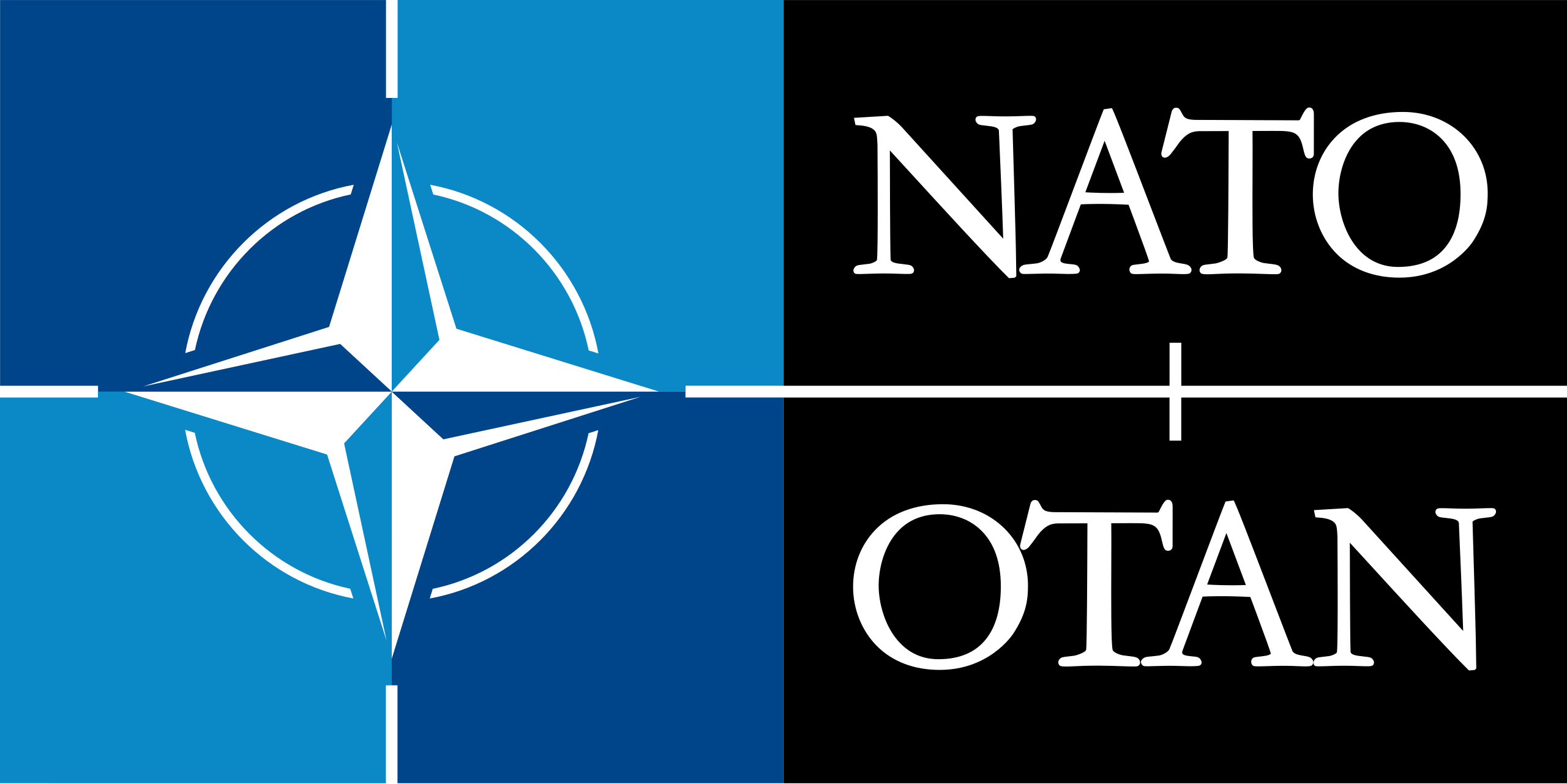 Mitglieder der NATO
Mitglieder der NATO

 Party and government
Party and government
 Group of the twenty most important industrial and emerging countries
Group of the twenty most important industrial and emerging countries

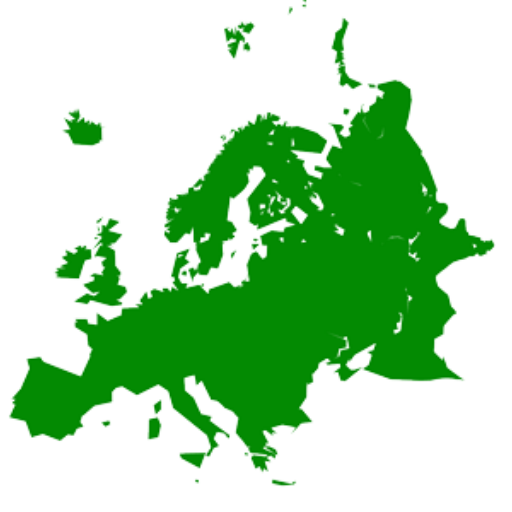 States of Europe
States of Europe
 Turkey
Turkey
Die Türkei (amtlich Türkiye Cumhuriyeti (T.C.), deutsch Republik Türkei) ist ein Einheitsstaat im vorderasiatischen Anatolien und südosteuropäischen Ostthrakien. Das Land ist seit seiner Gründung im Jahr 1923 als Nachfolgestaat des Osmanischen Reiches laizistisch und kemalistisch ausgerichtet. Der Staatsgründer Mustafa Kemal Atatürk leitete eine Modernisierung der Türkei durch gesellschaftliche und rechtliche Reformen nach dem Vorbild verschiedener europäischer Nationalstaaten ein. Der türkische Staat wird planmäßig bis zu den Wahlen im November des Jahres 2019 als parlamentarische Republik organisiert sein. Danach wird das Regierungssystem zu einem Präsidialsystem geändert. Nach einem Putschversuch im Juli 2016 haben die türkische Regierung und der Staatspräsident Erdoğan den Ausnahmezustand verhängt.
Geographisch wird das Land meist in sieben Regionen mit abweichendem Klima aufgeteilt. Die Türkei hat gut 78,7 Millionen Einwohner (2015) auf einer Fläche von 783.562 km². Im Ballungsraum von Istanbul lebt knapp ein Fünftel der türkischen Bevölkerung, daneben gibt es weitere Millionenstädte wie die Hauptstadt Ankara, Izmir, Bursa, Adana, Gaziantep, Konya, Antalya und Diyarbakır. Der Grad der Urbanisierung lag 2015 bei etwa 73 Prozent.[6] In der Türkei gibt es 16 UNESCO-Welterbestätten und zahlreiche Naturschutzgebiete.
 *Parties in Germany
*Parties in Germany
 Christlich Demokratische Union Deutschlands,CDU
Christlich Demokratische Union Deutschlands,CDU
 EU-Kommissar 2019-2024
EU-Kommissar 2019-2024
 President
President

 European Union
European Union
 EU Commissioner 2024-2029
EU Commissioner 2024-2029

 European Union
European Union
 President of the European Commission
President of the European Commission

 European Union
European Union
 EU Commissioner 2019-2024
EU Commissioner 2019-2024

 European Union
European Union
 Acting heads of government in the European Union
Acting heads of government in the European Union
 Europäische Volkspartei EVP
Europäische Volkspartei EVP

 Party and government
Party and government
 Group of the twenty most important industrial and emerging countries
Group of the twenty most important industrial and emerging countries

 Party and government
Party and government
 Group of Seven,G7
Group of Seven,G7

 Party and government
Party and government
 *President or Chairman
*President or Chairman
 President or Chairman
President or Chairman
 Deutschland
Deutschland
 President or Chairman
President or Chairman
 Deutschland
Deutschland
 Ursula von der Leyen
Ursula von der Leyen
 Associated Directorates-General 2019-2024
Associated Directorates-General 2019-2024
 Europäisches Zentrum für politische Strategie
Europäisches Zentrum für politische Strategie
 Associated Directorates-General 2019-2024
Associated Directorates-General 2019-2024
 Generaldirektion Kommunikation
Generaldirektion Kommunikation
 Associated Directorates-General 2019-2024
Associated Directorates-General 2019-2024
 Generalsekretariat der Europäischen Kommission
Generalsekretariat der Europäischen Kommission
 Associated Directorates-General 2019-2024
Associated Directorates-General 2019-2024
 Juristischer Dienst der Europäischen Kommission
Juristischer Dienst der Europäischen Kommission
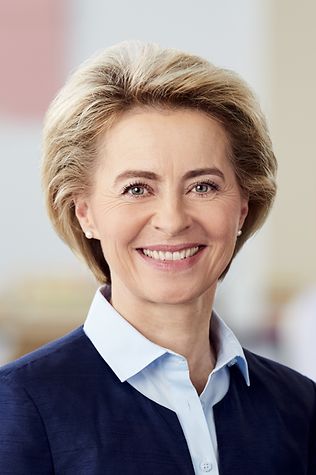

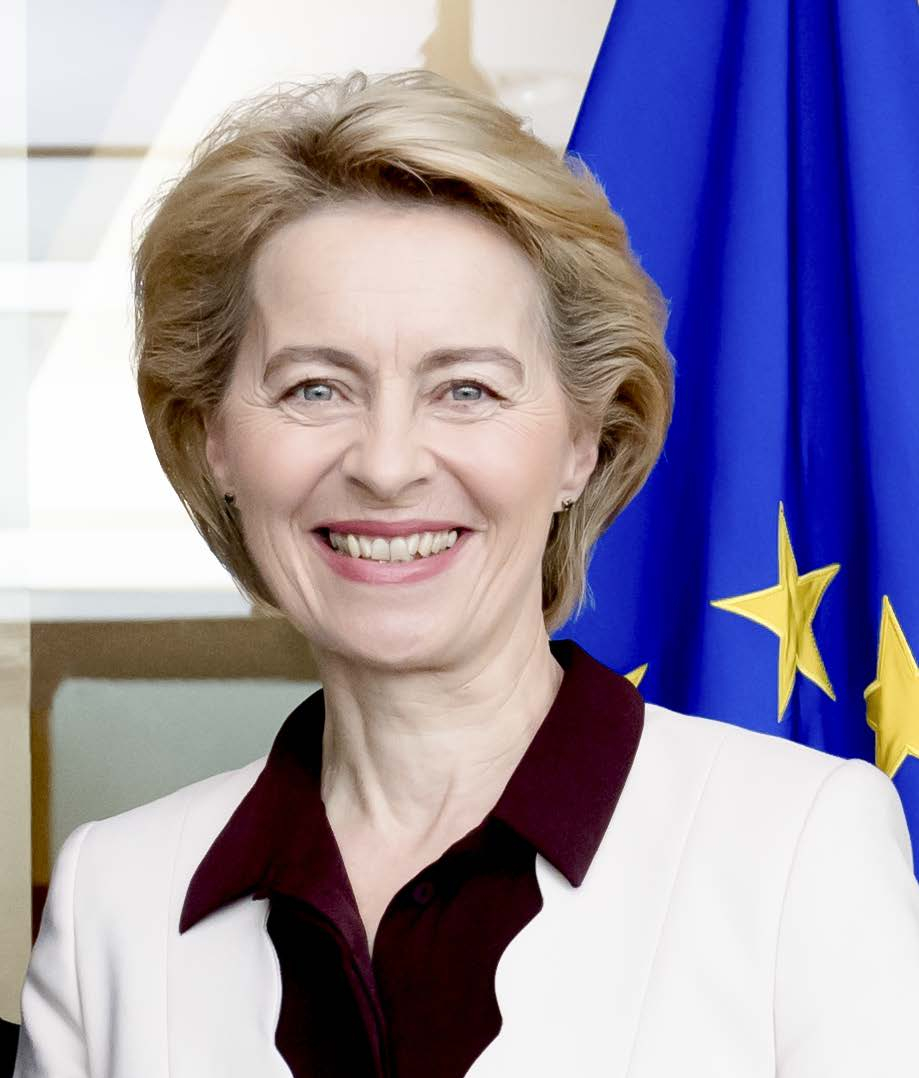

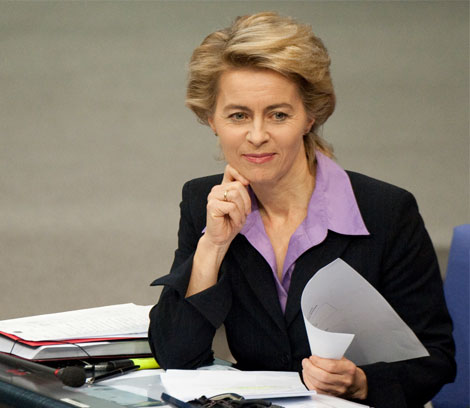
Ursula Gertrud von der Leyen (anhörenⓘ/?; geborene Albrecht; * 8. Oktober 1958 in Ixelles/Elsene, Belgien) ist eine deutsche Politikerin (CDU). Seit dem 1. Dezember 2019 ist sie Präsidentin der Europäischen Kommission. Sie wurde am 16. Juli 2019 und erneut am 18. Juli 2024 auf Vorschlag des Europäischen Rates durch das Europäische Parlament gewählt.
Zuvor war von der Leyen von 2003 bis 2005 niedersächsische Ministerin für Soziales, Frauen, Familie und Gesundheit, von 2005 bis 2009 Bundesministerin für Familie, Senioren, Frauen und Jugend, von 2009 bis 2013 Bundesministerin für Arbeit und Soziales und von 2013 bis 2019 Bundesministerin der Verteidigung. Von November 2010 bis November 2019 war sie zudem stellvertretende Bundesvorsitzende der CDU.
乌尔苏拉·格特鲁德·冯德莱恩(德语:Ursula Gertrud von der Leyen,发音:[ˈʔʊʁzula fɔn deːɐ̯ ˈlaɪən] (ⓘ);婚前姓阿尔布雷希特[a];1958年10月8日—),德国女性政治人物、医师,德国基督教民主联盟党员。2019年12月1日起任欧盟委员会主席[1]。历任德国国防部长[2]、德国联邦家庭、老年、妇女和青年部部长和德国联邦劳工和社会保障部部长等职务。
 *Political system of the People's Republic of China
*Political system of the People's Republic of China
 General Secretary of the Central Committee of the Communist Party of China
General Secretary of the Central Committee of the Communist Party of China
 *Political system of the People's Republic of China
*Political system of the People's Republic of China
 President of the People's Republic of China
President of the People's Republic of China
 *Political system of the People's Republic of China
*Political system of the People's Republic of China
 Chairman of the Central Military Commission of the People's Republic of China
Chairman of the Central Military Commission of the People's Republic of China

 Party and government
Party and government
 *President or Chairman
*President or Chairman

 Party and government
Party and government
 Group of the twenty most important industrial and emerging countries
Group of the twenty most important industrial and emerging countries

 Party and government
Party and government
 BRICS
BRICS
 Xi Jingping
Xi Jingping

 Cyril Ramaphosa
Cyril Ramaphosa

 Party and government
Party and government
 Group of the twenty most important industrial and emerging countries
Group of the twenty most important industrial and emerging countries

 Party and government
Party and government
 *President or Chairman
*President or Chairman

 Party and government
Party and government
 BRICS
BRICS

 Party and government
Party and government
 BRICS
BRICS
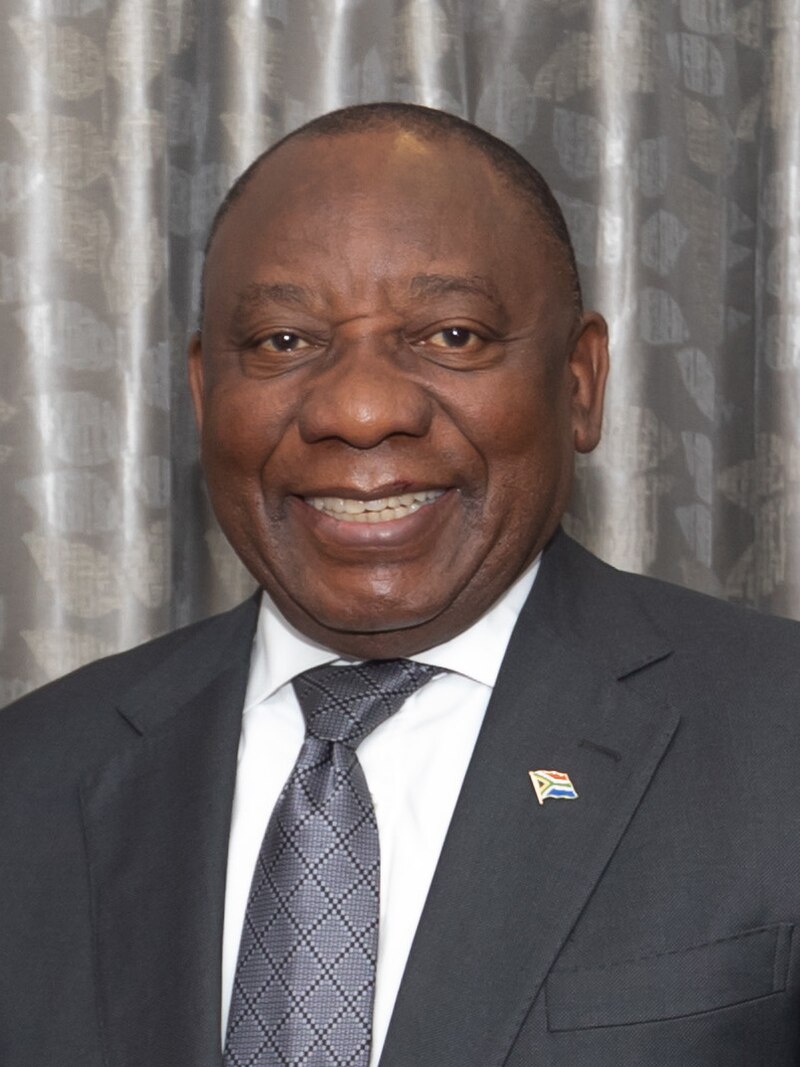
Matamela Cyril Ramaphosa [ramaˈpʰɔsa] (* 17. November 1952 in Johannesburg) ist ein südafrikanischer Politiker (ANC), Gewerkschaftsführer und Unternehmer. Von Mai 2014 bis Februar 2018 war er Vizepräsident Südafrikas unter Jacob Zuma, seit Dezember 2017 ist er Vorsitzender des ANC. Ramaphosa ist seit Februar 2018 Präsident der Republik Südafrika. Bei der Parlamentswahl am 29. Mai 2024 erhielt der ANC 40,2 % der Stimmen und erzielte damit erstmals keine absolute Mehrheit. Ramaphosa wurde am 14. Juni 2024 von dem neu gewählten Parlament für eine zweite Amtszeit bestätigt.
马塔梅拉·西里尔·拉马福萨(文达语:Matamela Cyril Ramaphosa,1952年11月17日—),南非政治家、商人及工会领袖[1]。他于2014年6月成为南非副总统[2],并在2017年12月当选非洲人国民大会主席[3]。2018年2月14日晚上,拉马福萨接替刚辞职的时任总统雅各布·祖玛,出任代总统。2月15日,他正式获国民议会选出,成为第5任南非总统,并于2024年连任至今[4]。

 European Union
European Union
 History of the European Union
History of the European Union

 European Union
European Union
 *Founding states
*Founding states

 Geography
Geography
 Italy
Italy

 Mitglieder der NATO
Mitglieder der NATO

 Party and government
Party and government
 Group of the twenty most important industrial and emerging countries
Group of the twenty most important industrial and emerging countries

 Party and government
Party and government
 Group of Seven,G7
Group of Seven,G7

 States of Europe
States of Europe

Italien (italienisch Italia [iˈtaːlja], amtlich Italienische Republik, italienisch Repubblica Italiana [reˈpubblika itaˈljaːna]) ist ein Staat in Südeuropa; seine Hauptstadt ist Rom.
Das italienische Staatsgebiet liegt zum größten Teil auf der vom Mittelmeer umschlossenen Apenninhalbinsel und der Po-Ebene sowie im südlichen Gebirgsteil der Alpen. Der Staat grenzt an Frankreich, die Schweiz, Österreich und Slowenien. Die Kleinstaaten Vatikanstadt und San Marino sind vollständig vom italienischen Staatsgebiet umschlossen. Neben den großen Inseln Sizilien und Sardinien sind mehrere Inselgruppen vorgelagert.
Als Kreuzweg der Zivilisationen des Mittelmeerraumes ist der italienische Beitrag zum kulturellen und historischen Erbe Europas und der Welt beachtenswert, das Gebiet des heutigen Italien war in der Antike die Kernregion des Römischen Reiches, die oberitalienische Toskana war das Kernland der Renaissance, ihr folgte von Rom ausgehend die Epoche des Barock.
Mit dem Risorgimento entstand der moderne italienische Nationalstaat: Von 1861 bis 1946 bestand unter dem Haus Savoyen das Königreich Italien, das rapide industrialisiert wurde, zu einer europäischen Großmacht aufstieg und ab den 1880er Jahren ein Kolonialreich in Nord- und Ostafrika errichtete. Die kostspielige und verlustreiche Teilnahme am Ersten Weltkrieg von 1915 bis 1918 führte zwar zur Vergrößerung des Staatsgebietes, aber auch zu schweren sozialen Unruhen und ebnete den italienischen Faschisten unter Benito Mussolini den Weg zur Macht. Das faschistische Regime herrschte von 1922 bis 1943/45 über Italien und führte das Land 1940 auf der Seite der Achsenmächte in den Zweiten Weltkrieg. Die Kriegsniederlage führte zum Verlust der Kolonien und zu vergleichsweise geringfügigen Gebietsabtretungen an den Nachbarstaat Jugoslawien. Im Juni 1946 beendete eine Volksabstimmung die Monarchie; die heutige Republik wurde ausgerufen.
Italien ist Mitinitiator der Europäischen Integration und Gründungsmitglied der Europäischen Union, des Europarates und der Lateinischen Union. Das Land ist Mitglied der G7, der G20, der NATO, der Vereinten Nationen (UNO), der Organisation für wirtschaftliche Zusammenarbeit und Entwicklung (OECD) und der Welthandelsorganisation (WTO).
Italien zählt laut Index der menschlichen Entwicklung als Industriestaat zu den höchstentwickelten Ländern der Erde[4] und ist gemessen am nominalen Bruttoinlandsprodukt die achtgrößte Volkswirtschaft der Welt.[5] Das Land genießt einen hohen Lebensstandard sowie Bildungsgrad und besitzt eine der höchsten Lebenserwartungen.[6] Italien ist das Land mit den meisten Welterbestätten der UNESCO (58)[7] und mit rund 65 Millionen Touristen jährlich eines der meistbesuchten Länder der Welt.[8]
意大利共和国(意大利语:Repubblica Italiana[注 1]),通称意大利(Italia),是欧洲主权国家,主要由位于南欧的靴型意大利半岛及两个地中海岛屿西西里岛和撒丁岛所组成。意大利北方的阿尔派恩山地区与法国、瑞士、奥地利以及斯洛文尼亚接壤,其领土包围着两个微型国家——圣马力诺和梵蒂冈及一个主权实体 ——马耳他骑士团,而在瑞士拥有座落于卢加诺湖湖畔的意大利坎波内这个境外领土。全国行政上划分为20个区域(其中5个为自治区)、110个省与8,100个城市。首都为罗马,意大利王国在1870年将首都设置在此,而都灵(1861年-1865年)及佛罗伦萨(1865年-1870年)也曾是意大利王国的首都。根据2017年统计,意大利人口为6,059万,领土面积为301,338平方公里,人口密度约每平方公里201.1人,属于温带地中海型气候。意大利是欧洲人口第5多的国家,人口在世界上排名第23位。意大利因其拥有美丽的自然风光和为数众多的人类文化遗产而被称为美丽的国度(Belpaese)。
现今的意大利地区是以前欧洲民族及文化的摇篮,曾孕育出罗马文化及伊特拉斯坎文明,而意大利的首都罗马,几个世纪以来都是西方世界的政治中心,也曾经是罗马帝国的首都。当罗马帝国在西部的统治瓦解后,意大利遭受了多次外族入侵,包括伦巴第人、东哥德人等日耳曼民族,之后还有诺曼人等。拜占庭帝国曾一度重新占领意大利地区。在14世纪后,意大利转而成为文艺复兴的发源地[7],而文艺复兴对欧洲影响深远,让欧洲思想前进了一大步。意大利过去分裂为许多王国与城邦,但最终在1871年成为统一的意大利王国(除了圣马力诺)[8]。意大利殖民帝国巅峰是在1942年第二次世界大战时期,首相墨索里尼统治下的意大利王国变成一个地中海帝国,把势力范围延伸到北非(利比亚 、突尼斯)、东非(厄立特里亚、索马里兰、埃塞俄比亚)、巴尔干(阿尔巴尼亚、达尔马提亚、黑山、克罗地亚独立国西部、希腊、罗得岛与十二群岛)和法国南部(隆河以东的领土、科西嘉岛、摩纳哥),而且拥有中国天津的租界[9]。1945年,墨索里尼建立的意大利社会共和国被盟军击垮,意大利在二战后,废除了君主制,意大利王国灭亡,建立了现在的意大利共和国。战后根据1947年巴黎和平条约,意大利殖民帝国终结。
意大利也在政治、文化、科学、医疗卫生、教育、体育、艺术、时尚、宗教、料理、电影、建筑、经济及音乐等方面具有重要的影响力。米兰是意大利的经济及工业中心,根据2009年全球语言监察组织(Global Language Monitor)的资料[10],它也是世界时尚之都。在2007年造访意大利的游客人数位居世界第5位,总共超过4,370万人次的国际游客造访[11],而罗马则是欧盟国家中第3多游客造访的城市[12],也被认为世界上最美丽的十大古城之一[13]。威尼斯则被认为是世界上最美丽的城市,《纽约时报》形容它“无疑是世界上最美丽的人造城市”[14]。
意大利共和国是一个议会制民主共和国,是一个发达国家,世界七大工业国之一,最佳出生地指数则在世界排名第8名[15]。意大利在2017年人类发展指数列表中则名列第28位[16],并拥有高度人均国内生产总额[17][18]。根据国内生产总额与购买力平价国内生产总值的数据,意大利分别是世界第8大与第10大经济体[19]。意大利的政府预算金额则是位居世界第5位[20]。意大利是北大西洋公约和欧盟的创始会员国,也是七大工业国集团、20国集团和成员之一。意大利也参与经济合作暨发展组织、世界贸易组织、欧洲议会、西欧联盟及欧洲创新中心(Central European Initiative)。意大利也参加申根协议,也是世界世界国防预算金额第9高的国家且分享北约的核武器。
意大利在欧洲及全球的军事、文化和外交事务扮演重要的角色,首都罗马则是世界上对于政治及文化具有重要影响力的城市,世界上许多著名的机构,例如国际农业发展基金会(International Fund for Agricultural Development)[21]、全球在地论坛(Glocal Forum)[22]、世界粮食计划署及联合国粮食及农业组织的总部都设在罗马。意大利也拥有较高的教育指数、劳动力人口[23]及慈善捐助金额[24]。人均预期寿命排名世界第11位[25]。医疗保健系统在2000年被世界卫生组织评比为世界第2。意大利也是一个全球化的国家[26]。意大利的国家品牌价值在2009年名列世界第6位[27]。意大利在艺术、科学和技术上拥有悠久的传统,且至2017年共有53处世界遗产,是拥有最多世界遗产的西方国家[28][29]。
イタリア共和国(イタリアきょうわこく、イタリア語: Repubblica Italiana)、通称イタリア(イタリア語: Italia、IPA: [iˈtaːlja] (![]() 音声ファイル) イターリャ)は、南ヨーロッパに位置する共和制国家。首都はローマ。 北をスイスとオーストリア、西がフランス、 東はスロベニアと国境を接している。南は地中海が位置しており、アルバニア、アルジェリア、クロアチア、ギリシャ、リビア、マルタ、モンテネグロ、スペイン、チュニジアと海上境界線を共有している。また、国土には独立国として小規模であるバチカンとサンマリノが存在している。
音声ファイル) イターリャ)は、南ヨーロッパに位置する共和制国家。首都はローマ。 北をスイスとオーストリア、西がフランス、 東はスロベニアと国境を接している。南は地中海が位置しており、アルバニア、アルジェリア、クロアチア、ギリシャ、リビア、マルタ、モンテネグロ、スペイン、チュニジアと海上境界線を共有している。また、国土には独立国として小規模であるバチカンとサンマリノが存在している。
イタリアはヨーロッパにおける古代文化の発祥地の一つとして知られ、同時に世界的な文化大国の一国に数えられている。文化・学問・宗教で歴史的に影響力を発揮しており、バチカン市国を首都ローマの領域内に事実上保護し、レオナルド・ダ・ヴィンチやガリレオ、ミケランジェロ、コロンブス、マキャヴェリといった偉人たちの故国でもある。かつてのローマ帝国の中枢となる地域であり、またルネサンスやリソルジメントなどの幾つかの世界史的事象の主要な舞台となった。
また、高い人間開発指数を持つイタリアは文化・経済ともに先進国であり[1]、名目GDPでは世界第8位かつ購買力平価では世界第12位、ユーロ圏ではドイツとフランスに次ぐ第3位の経済規模を持つ経済大国である[2]。
国際連合、北大西洋条約機構、G7、G20、OECD、欧州評議会、地中海連合、パリクラブの一員であり、ヨーロッパにおける四大国「ビッグ4」や、文化的・経済的・政治的に大きな影響を及ぼす列強の一角に数えられる[3][4]。また、コンセンサス連合の参加国であると同時に主導国である。軍事面では、世界第8位の軍事力を有している[5]。
総面積は30万1,338km2で、ロ・スティヴァレ(lo Stivale)と称される地中海に突き出たブーツ状のイタリア半島を中心に、地中海に浮かぶシチリア島とサルディーニャ島を主要な領土としており、いくつかの小島も領有している。北部にはアルプス山脈が、半島に沿ってアペニン山脈が走っており、平野はその間にあるポー平原などに限られ、国土の40%が山岳地帯である[6]。気候は各地ともに温暖で、北部を除き国土の大部分は温帯の地中海性気候に属し、これは農業と歴史に大きな影響を与えてきた[7]。西に港へ適したリグリア海、東には大陸棚が海の幸を豊富にもたらすアドリア海、南東部にはバルカン半島へと繋がるイオニア海があり、地理的に恵まれている。南にはティレニア海があり周辺にはストロンボリ火山やヴェスヴィオ山、エトナ山などの火山が集まっていて、世界有数の地震地帯である[6]。
Italy (Italian: Italia [iˈtaːlja] (![]() listen)), officially the Italian Republic (Italian: Repubblica Italiana [reˈpubblika itaˈljaːna]),[13][14] is a country consisting of a peninsula delimited by the Alps and several islands surrounding it,[15] whose territory largely coincides with the homonymous geographical region.[16] Italy is located in the centre of the Mediterranean Sea, in Southern Europe,[17][18][19] and is also considered part of Western Europe.[20][21] A unitary parliamentary republic with Rome as its capital and largest city, the country covers a total area of 301,340 km2 (116,350 sq mi) and shares land borders with France, Switzerland, Austria, Slovenia, and the enclaved microstates of Vatican City and San Marino. Italy has a territorial exclave in Switzerland (Campione) and a maritime exclave in Tunisian waters (Lampedusa). With around 60 million inhabitants, Italy is the third-most populous member state of the European Union.
listen)), officially the Italian Republic (Italian: Repubblica Italiana [reˈpubblika itaˈljaːna]),[13][14] is a country consisting of a peninsula delimited by the Alps and several islands surrounding it,[15] whose territory largely coincides with the homonymous geographical region.[16] Italy is located in the centre of the Mediterranean Sea, in Southern Europe,[17][18][19] and is also considered part of Western Europe.[20][21] A unitary parliamentary republic with Rome as its capital and largest city, the country covers a total area of 301,340 km2 (116,350 sq mi) and shares land borders with France, Switzerland, Austria, Slovenia, and the enclaved microstates of Vatican City and San Marino. Italy has a territorial exclave in Switzerland (Campione) and a maritime exclave in Tunisian waters (Lampedusa). With around 60 million inhabitants, Italy is the third-most populous member state of the European Union.
Due to its central geographic location in Southern Europe and the Mediterranean, Italy has historically been home to myriad peoples and cultures. In addition to the various ancient peoples dispersed throughout what is now modern-day Italy, the most predominant being the Indo-European Italic peoples who gave the peninsula its name, beginning from the classical era, Phoenicians and Carthaginians founded colonies mostly in insular Italy,[22] Greeks established settlements in the so-called Magna Graecia of Southern Italy, while Etruscans and Celts inhabited central and northern Italy respectively. An Italic tribe known as the Latins formed the Roman Kingdom in the 8th century BC, which eventually became a republic with a government of the Senate and the People. The Roman Republic initially conquered and assimilated its neighbours on the Italian peninsula, eventually expanding and conquering parts of Europe, North Africa and Asia. By the first century BC, the Roman Empire emerged as the dominant power in the Mediterranean Basin and became a leading cultural, political and religious centre, inaugurating the Pax Romana, a period of more than 200 years during which Italy's law, technology, economy, art, and literature developed.[23][24]
During the Early Middle Ages, Italy endured the fall of the Western Roman Empire and barbarian invasions, but by the 11th century numerous rival city-states and maritime republics, mainly in the northern and central regions of Italy, became prosperous through trade, commerce, and banking, laying the groundwork for modern capitalism.[25] These mostly independent statelets served as Europe's main trading hubs with Asia and the Near East, often enjoying a greater degree of democracy than the larger feudal monarchies that were consolidating throughout Europe; however, part of central Italy was under the control of the theocratic Papal States, while Southern Italy remained largely feudal until the 19th century, partially as a result of a succession of Byzantine, Arab, Norman, Angevin, Aragonese, and other foreign conquests of the region.[26] The Renaissance began in Italy and spread to the rest of Europe, bringing a renewed interest in humanism, science, exploration, and art. Italian culture flourished, producing famous scholars, artists, and polymaths. During the Middle Ages, Italian explorers discovered new routes to the Far East and the New World, helping to usher in the European Age of Discovery. Nevertheless, Italy's commercial and political power significantly waned with the opening of trade routes that bypassed the Mediterranean.[27] Centuries of foreign meddling and conquest, and the rivalry and infighting between the Italian city-states, such as the Italian Wars of the 15th and 16th centuries, left Italy politically fragmented, and it was further conquered and divided among multiple foreign European powers over the centuries.
By the mid-19th century, rising Italian nationalism and calls for independence from foreign control led to a period of revolutionary political upheaval. After centuries of foreign domination and political division, Italy was almost entirely unified in 1861 following a war of independence, establishing the Kingdom of Italy.[28] From the late 19th century to the early 20th century, Italy rapidly industrialised, mainly in the north, and acquired a colonial empire,[29] while the south remained largely impoverished and
 Atomic bomb
Atomic bomb
 BRICS summit
BRICS summit
 Commonwealth of Nations
Commonwealth of Nations

 History
History
 M 1500 - 2000 AD
M 1500 - 2000 AD

 History
History

 History
History

 History
History
 N 2000 - 2100 AD
N 2000 - 2100 AD
 History of India
History of India
 India
India

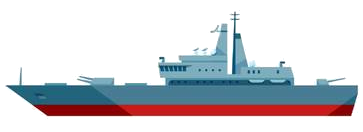
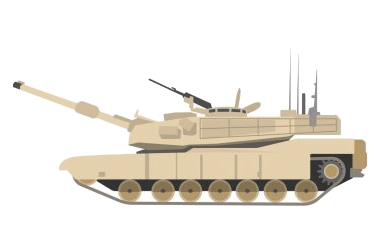
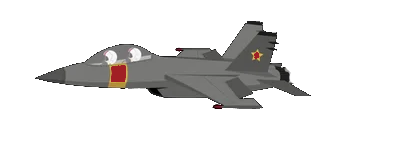
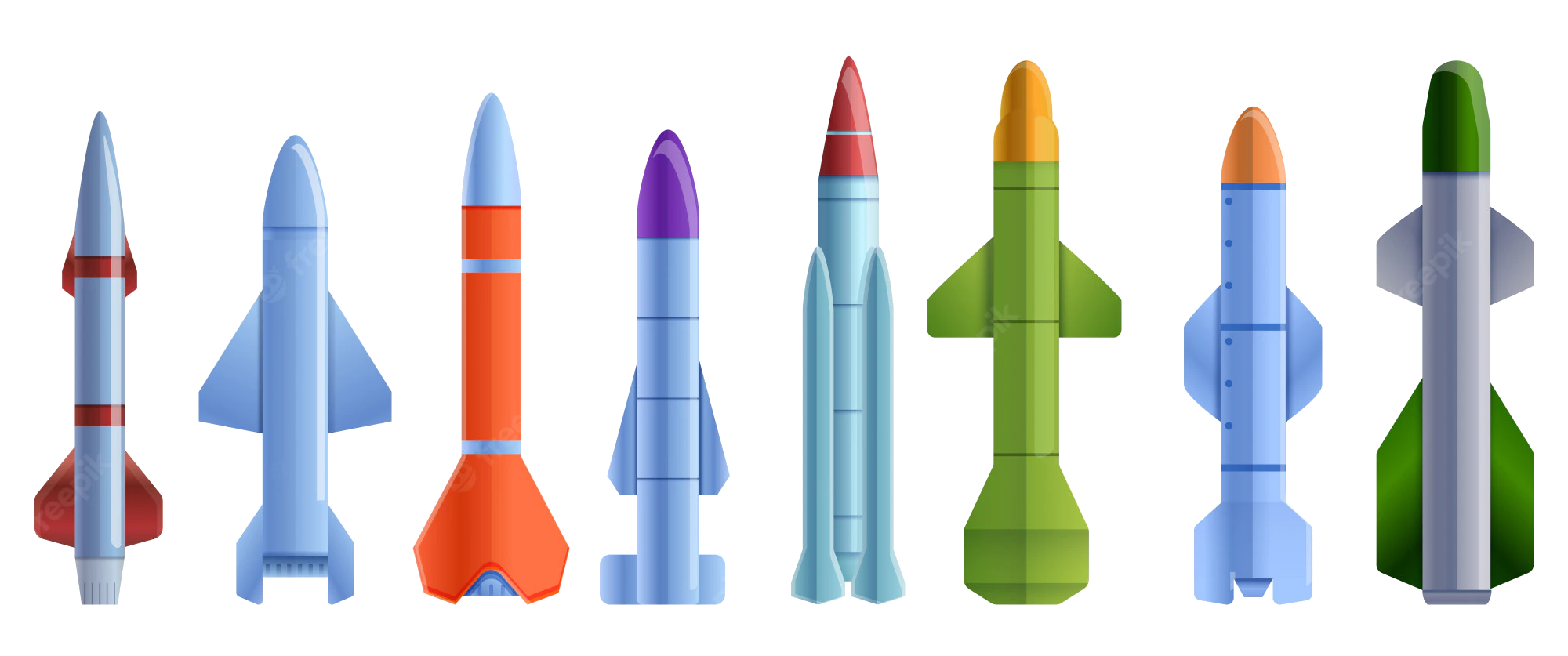 Military, defense and equipment
Military, defense and equipment
 Nuclear Weapon
Nuclear Weapon

 Party and government
Party and government
 Group of the twenty most important industrial and emerging countries
Group of the twenty most important industrial and emerging countries

 Party and government
Party and government
 BRICS
BRICS
 Silk road
Silk road
 Shanghai Cooperation Organization
Shanghai Cooperation Organization

 States of Asia
States of Asia

Indien ist ein Staat in Südasien, der den größten Teil des indischen Subkontinents umfasst. Indien ist eine Bundesrepublik, die von 29 Bundesstaaten gebildet wird und außerdem sieben bundesunmittelbare Gebiete umfasst. Der Eigenname der Republik lautet in den beiden landesweit gültigen Amtssprachen Bharat Ganarajya (Hindi) und Republic of India (Englisch). Die moderne demokratische und säkulare indische Republik besteht seit 1949 und seit 1950 gilt die Verfassung Indiens.
Der Himalaya bildet die natürliche Nordgrenze Indiens, im Süden umschließt der Indische Ozean das Staatsgebiet. Indien grenzt an Pakistan, das chinesische Autonome Gebiet Tibet, Nepal, Bhutan, Myanmar (Birma) und Bangladesch. Weitere Nachbarstaaten im Indischen Ozean sind Sri Lanka und die Malediven. Hinsichtlich der Landesfläche ist Indien das flächenmäßig siebtgrößte Land der Erde.
Das Gebiet Indiens ist mindestens seit der bronzezeitlichen Indus-Hochkultur zivilisiert. Der indische Staat ist mit über 1,3 Milliarden Einwohnern (2016)[6] nach der Volksrepublik China (fast 1,4 Mrd.)[7] das zweitbevölkerungsreichste Land der Erde und somit die bevölkerungsreichste Demokratie der Welt.[8] Bei gleichbleibend hohem Bevölkerungswachstum könnte Indien schon im Jahr 2020 China überholen. Durch fortschreitende Modernisierung, Bildung, Wohlstand und Urbanisierung sinkt die Geburtenrate jedoch bereits. Hauptstadt Indiens ist Neu-Delhi, Teil der Metropole Delhi; weitere Ballungsräume sind auch Mumbai, Kalkutta, Chennai, Bangalore, Hyderabad, Ahmedabad und Pune.
Die indische Gesellschaft wird trotz verfassungsmäßiger Religionsfreiheit vom religiösen hierarchischen Kastensystem bestimmt. Die mit Abstand größte Religionsgruppe sind die Hindus, gefolgt von Muslimen, Christen und den historisch aus Indien stammenden Sikhs, Buddhisten und Jaina. Laut Index der menschlichen Entwicklung (HDI) erreicht Indien den Status „mittlere menschliche Entwicklung“ und Platz 131 von 187 weltweit (2016, im Vergleich erreicht die VR China Platz 90).[9] Wirtschaftlich gilt Indien als Schwellenland und gehört zu den O5- und BRICS-Staaten und der Gruppe der zwanzig wichtigsten Industrie- und Schwellenländer (G20). Indien ist trotz seines noch niedrigen Pro-Kopf-Einkommens bereits die drittgrößte bzw. sechstgrößte Wirtschaftsmacht der Welt (kaufkraftbereinigt bzw. nominell) und war 2015 erstmals die am schnellsten wachsende Volkswirtschaft der G20-Gruppe.
印度共和国(印地语:भारत गणराज्य,Bhārat Ganarājya;英语:Republic of India),通称印度(印地语:भारत;英语:India),是位于南亚印度次大陆上的国家,印度面积位列世界第七,印度人口众多,位列世界第二,截至2018年1月印度拥有人口13.4亿,仅次于中国人口的13.8亿,人口成长速度比中国还快,预计近年将交叉。是亚洲第二大也是南亚最大的国家,面积328万平方公里(实际管辖),同时也是世界第三大(购买力平价/PPP)经济体。
印度并非单一民族及文化的国家。印度的民族和种族非常之多,有“民族大熔炉”之称,其中印度斯坦族占印度总人口的大约一半,是印度最大的民族。印度各个民族都拥有各自的语言,仅宪法承认的官方语言就有22种之多,其中印地语和英语被定为印度共和国的联邦官方语言[5],并且法院裁定印度没有国语。[9][10]英语作为共同语言使用在印度非常流行,尤其在南印地位甚至高于印地语,但受限于教育水准,普通民众普遍不精通英语。另外,印度也是一个多宗教多信仰的国家,世界4大宗教其中的佛教和印度教都源自印度。大部分印度人信仰印度教。伊斯兰教在印度也有大量信徒,是印度的第二大宗教,信教者约占印度的14.6%(截至2011年,共有约1亿7千7百万人)。伊斯兰教是在公元8世纪随着阿拉伯帝国的扩张而传播到印度的。公元10世纪后,北印的大多数王朝统治者都是信奉伊斯兰教的,特别是莫卧儿王朝。印度也是众多正式和非正式的多边国际组织的成员,包括世界贸易组织、英联邦、金砖五国、南亚区域合作联盟和不结盟运动等。
以耕种农业、城市手工业、服务业以及其支撑产业为主的部分行业已经相对取得了进展。除了民族文化与北方地形的丰富使印度旅游业颇受欢迎之外,由于时差,大批能说英语的人才也投入外包行业(即是外国企业把客户咨询,电话答录等等服务转移到印度)。另一方面,宝莱坞电影的文化输出在英语圈乃至全球的影响力不亚于世界主流。同时印度还是很多专利过期药物的生产地,以低价格提供可靠的医疗。近年来,印度政府还大力投资本国高等教育,以利于在科学上与国际接轨,例如自主太空研究、南亚半岛生态研究等等。印度最重要的贸易伙伴是美国、欧盟、日本、中国和阿拉伯联合酋长国。
インドは、南アジアに位置し、インド洋の大半とインド亜大陸を領有する連邦共和制国家である。ヒンディー語の正式名称भारत गणराज्य(ラテン文字転写: Bhārat Gaṇarājya、バーラト・ガナラージヤ、英語: Republic of India)を日本語訳したインド共和国とも呼ばれる。
西から時計回りにパキスタン、中華人民共和国、ネパール、ブータン、バングラデシュ、ミャンマー、スリランカ、モルディブ、インドネシアに接しており、アラビア海とベンガル湾の二つの海湾に挟まれて、国内にガンジス川が流れている。首都はニューデリー、最大都市はムンバイ。
1947年にイギリスから独立。インダス文明に遡る古い歴史、世界第二位の人口を持つ。国花は蓮、国樹は印度菩提樹、国獣はベンガルトラ、国鳥はインドクジャク、国の遺産動物はインドゾウである。
インドは南アジア随一の面積と世界第2位の人口を持つ大国である。12億人を超える国民は、多様な民族、言語、宗教によって構成されている。連邦公用語はヒンディー語、他にインド憲法で公認されている言語が21あり主な言語だけで15を超えるため、インドの紙幣には17の言語が印刷されている。議会制民主主義国家であり、有権者数8億人と世界最大である[5]。州政府が一定の独立性を持っているため、各州に中央政府とは別に政府があり大臣がいる。
労働力人口の3分の2が農業に従事する一方、製造業とサービス業が急速に成長している。国民の識字率は74.04%である。ヒンドゥー教徒が最も多く、イスラム教、シーク教がこれに次ぐ。カースト制度による差別は憲法で禁止されているが、今でも農村部では影響は残っている。
アジア開発銀行はインドの中間層が向こう15年間で人口の7割に達するとしている[6]。
India (IAST: Bhārat), also known as the Republic of India (IAST: Bhārat Gaṇarājya),[18][e] is a country in South Asia. It is the seventh largest country by area and with more than 1.3 billion people, it is the second most populous country and the most populous democracy in the world. Bounded by the Indian Ocean on the south, the Arabian Sea on the southwest, and the Bay of Bengal on the southeast, it shares land borders with Pakistan to the west;[f] China, Nepal, and Bhutan to the northeast; and Bangladesh and Myanmar to the east. In the Indian Ocean, India is in the vicinity of Sri Lanka and the Maldives, while its Andaman and Nicobar Islands share a maritime border with Thailand and Indonesia.
The Indian subcontinent was home to the urban Indus Valley Civilisation of the 3rd millennium BCE. In the following millennium, the oldest scriptures associated with Hinduism began to be composed. Social stratification, based on caste, emerged in the first millennium BCE, and Buddhism and Jainism arose. Early political consolidations took place under the Maurya and Gupta empires; later peninsular Middle Kingdoms influenced cultures as far as Southeast Asia. In the medieval era, Judaism, Zoroastrianism, Christianity, and Islam arrived, and Sikhism emerged, all adding to the region's diverse culture. Much of the north fell to the Delhi Sultanate; the south was united under the Vijayanagara Empire. The economy expanded in the 17th century in the Mughal Empire. In the mid-18th century, the subcontinent came under British East India Company rule, and in the mid-19th under British crown rule. A nationalist movement emerged in the late 19th century, which later, under Mahatma Gandhi, was noted for nonviolent resistance and led to India's independence in 1947.
In 2017, the Indian economy was the world's sixth largest by nominal GDP[19] and third largest by purchasing power parity.[15] Following market-based economic reforms in 1991, India became one of the fastest-growing major economies and is considered a newly industrialised country. However, it continues to face the challenges of poverty, corruption, malnutrition, and inadequate public healthcare. A nuclear weapons state and regional power, it has the second largest standing army in the world and ranks fifth in military expenditure among nations. India is a federal republic governed under a parliamentary system and consists of 29 states and 7 union territories. A pluralistic, multilingual and multi-ethnic society, it is also home to a diversity of wildlife in a variety of protected habitats.
L'Inde, officiellement la république de l'Inde4, en hindi : भारत (Bhārat) et भारत गणराज्य (Bhārat Gaṇarājya), est un pays d'Asie du Sud qui occupe la majeure partie du sous-continent indien. Sa capitale est New Delhi. L'Inde est le deuxième pays le plus peuplé et le septième pays le plus grand du monde. Le littoral indien s'étend sur plus de sept mille kilomètres. Le pays a des frontières communes avec le Pakistan à l'ouest, la Chine, le Népal, et le Bhoutan au nord et au nord-est, le Bangladesh et la Birmanie à l'est. Sur l'océan Indien, l'Inde est à proximité des Maldives au sud-ouest, du Sri Lanka et de l'Indonésie au sud-est. L'Inde revendique également une frontière avec l'Afghanistan au nord-ouest. L'Inde dispose de l'arme nucléaire depuis 1974 après avoir fait des essais officiels.
L'Inde est un foyer de civilisations parmi les plus anciennes du monde, la civilisation de la vallée de l'Indus s'y est développée dès 3000 av. J.-C. Le sous-continent indien a abrité de vastes empires et est présent sur les routes commerciales dès l'Antiquité. L'Inde est la terre de naissance de quatre religions majeures — l'hindouisme, le jaïnisme, le bouddhisme et le sikhisme — alors que le zoroastrisme, le christianisme et l'islam s'y sont implantés durant le Ier millénaire. L'Inde est aujourd'hui un pays très divers sur le plan religieux, linguistique et culturel.
Le pays a été progressivement annexé par la Compagnie anglaise des Indes avant de passer sous le contrôle du Royaume-Uni au XIXe siècle. L'Inde devient indépendante en 1947 après une lutte marquée par la résistance non-violente du Mohandas Karamchand Gandhi. Le pays est depuis 1950 une république parlementaire fédérale considérée comme la démocratie la plus peuplée au monde.
En 2017, l'économie indienne est la sixième du monde en PIB nominal et la troisième en PIB à parité de pouvoir d'achat. L'Inde, pays à forte croissance économique, est considéré comme un nouveau pays industrialisé. Cependant certains problèmes comme la pauvreté, l'analphabétisme ou la corruption restent très importants.
L'India (hindi: भारत Bhārat), ufficialmente Repubblica dell'India (hindi: भारत गणराज्य Bhārat Gaṇarājya), è uno Stato federale dell'Asia meridionale, con capitale Nuova Delhi.
È il settimo Stato per estensione geografica al mondo (3 287 263 km²) e il secondo più popolato, con 1 335 250 000 abitanti (censimento 2017).[8] È bagnato dall'oceano Indiano a sud, dal mar Arabico a ovest e dal golfo del Bengala a est. Possiede una linea costiera che si snoda per 7.517 km.[9] Confina con il Pakistan a ovest,[10] Cina, Nepal e Bhutan a nord-est, Bangladesh e Birmania a est. Suoi vicini prossimi, separati dell'oceano Indiano, sono lo Sri Lanka a sud-est e le Maldive a sud-ovest.
Sede della civiltà della valle dell'Indo e regione di rotte commerciali storiche e di vasti imperi, il subcontinente indiano è stato identificato con il suo commercio e la ricchezza culturale per gran parte della sua lunga storia.[11] Quattro grandi religioni del mondo (l'induismo, il buddismo, il giainismo e il sikhismo) sono nate qui, mentre lo zoroastrismo, l'ebraismo, il cristianesimo e l'islam arrivarono entro il I millennio d.C. dando forma nella regione a una grandissima diversità culturale. Gradualmente annessa alla Compagnia britannica delle Indie orientali dai primi decenni del XVIII secolo e colonizzata dal Regno Unito dalla metà del XIX secolo, l'India è diventata un moderno Stato nazionale nel 1947, dopo una lotta per l'indipendenza che è stata caratterizzata da una diffusa resistenza non violenta guidata da Gandhi.
L'India è la dodicesima più grande economia del mondo in termini nominali e la quarta in termini di potere d'acquisto. Riforme economiche hanno trasformato lo Stato nella seconda economia a più rapida crescita[12] (è uno dei cinque Paesi a cui ci si riferisce con l'acronimo BRICS),[13] ma nonostante ciò il Paese soffre ancora di alti livelli di povertà, analfabetismo e malnutrizione, oltre ad avere un sistema sociale basato sulle caste. Società pluralistica, multilingue e multietnica, l'India è inoltre ricca sul piano naturale, con un'ampia diversità di fauna selvatica e di habitat protetti.
La India8 ―oficialmente República de la India (en hindi, भारत गणराज्य, Bhārat Gaṇarājya; en inglés, Republic of India)― es un país soberano ubicado en el sur de Asia. Con sus más de 1240 millones de habitantes, es el segundo país del mundo por población ―después de la República Popular China (con 1395 millones). Su superficie es de 3 287 263 km²,3 lo cual lo ubica en el séptimo lugar entre los países más extensos del planeta. Limita con el océano Índico al sur, con el mar Arábigo al oeste y con el golfo de Bengala al este, a lo largo de una línea costera de más de 7517 kilómetros.9
La India también limita con Pakistán al oeste;10 al norte con China, Nepal y Bután y al este con Bangladés y Birmania. Además, la India se encuentra cerca de las islas de Sri Lanka, Maldivas e Indonesia. Su capital es Nueva Delhi y su ciudad más poblada es Bombay.
Hogar de la cultura del valle del Indo y una región histórica por sus rutas comerciales y grandes imperios, el subcontinente indio fue identificado por su riqueza cultural y comercial en la mayor parte de su larga historia.11 Cuatro de las religiones más importantes del mundo, el hinduismo, el budismo, el jainismo y el sijismo se originaron allí, mientras que otras religiones como el zoroastrismo, el judaísmo, el cristianismo y el islam llegaron durante el I milenio, dando forma a diversas culturas de la región.
Gradualmente anexada por la Compañía Británica de las Indias Orientales desde principios del siglo XVIII y colonizada por el Reino Unido desde mediados del siglo XIX, la India se convirtió en una nación independiente en 1947, tras una lucha por la independencia que estuvo marcada por un movimiento de no violencia.12
La India es una república federal13 compuesta por 29 estados y 7 territorios de la Unión, con un sistema de democracia parlamentaria. En 2017, la economía india es la tercera más grande del mundo y la sexta en términos de PIB nominal. Las reformas económicas de 1991 la han transformado en una de las economías de más rápido crecimiento;14 sin embargo, todavía sufre de problemas como los altos niveles de pobreza, analfabetismo,15 pandemias, malnutrición y constantes violaciones de los derechos de las mujeres. Además de una sociedad plural en lo religioso, multilingüe y multiétnica, la India también alberga una flora y fauna diversas en diferentes hábitats protegidos.
Además, la República de la India es uno de los diez países que posee un arsenal nuclear y no es signataria del Tratado de No Proliferación Nuclear, dado que, en sus actuales términos, no le permitiría mantener su armamento atómico.
И́ндия (хинди भारत Bhārat, англ. India), официальное название — Респу́блика И́ндия (хинди भारत गणराज्य Bhārat Gaṇarājya, англ. Republic of India) — государство в Южной Азии. Население — 1 340 468 000 человек (22 декабря 2017)[6], территория — 3 287 263 км², по обоим этим показателям является крупнейшей страной Южной Азии. Занимает второе место в мире по численности населения и седьмое по территории. Столица — Нью-Дели. Государственные языки — хинди и английский.
Федеративное государство, парламентская республика. Премьер-министр — Нарендра Моди, президент — Рам Натх Ковинд.

 Geography
Geography
 Indonesia
Indonesia

 Party and government
Party and government
 Group of the twenty most important industrial and emerging countries
Group of the twenty most important industrial and emerging countries
Dem interessierten Besucher eröffnen sich, in den verschiedenen Regionen Indonesiens (wie Bali, Java, Sumatra usw.), faszinierende geologische Formationen und eine artenreiche Tier- und Pflanzenwelt.
Die Orang-Utans Borneos, die Riesenechsen der Insel Komodo und zahlreiche andere Tierarten leben verteilt auf den über 17.000 Inseln Indonesiens.
Die Pflanzenwelt reicht von den einigen der kleinsten Orchideenarten über die größte Blume der Welt, der Rafflesia, bis hin zu den leider immer stärker bedrohten, Urwäldern Papuas.
Die wechselhafte Geschichte Indonesiens, sowie das Vielvölkergemisch aus über 300 verschiedenen ethnischen Gruppen, mit teils sehr unterschiedlicher Geschichte bietet die Möglichkeit immer etwas Neues zu entdecken.
Indonesien entfaltet einen unerschöpflichen kulturellen Reichtum. Seien dies das javanische Schattenspiel "Wayang Kulit", der "Barong-Tanz" auf Bali, die verschiedenen Arten des Gamelanspiels oder auch die indigenen Stämme Papuas.(Quelle: http://indonesia-portal.de/)

 Party and government
Party and government

 Party and government
Party and government
 Group of the twenty most important industrial and emerging countries
Group of the twenty most important industrial and emerging countries
 President or Chairman
President or Chairman
 Republik Korea
Republik Korea
 President or Chairman
President or Chairman
 Yoon Suk-yeol
Yoon Suk-yeol



